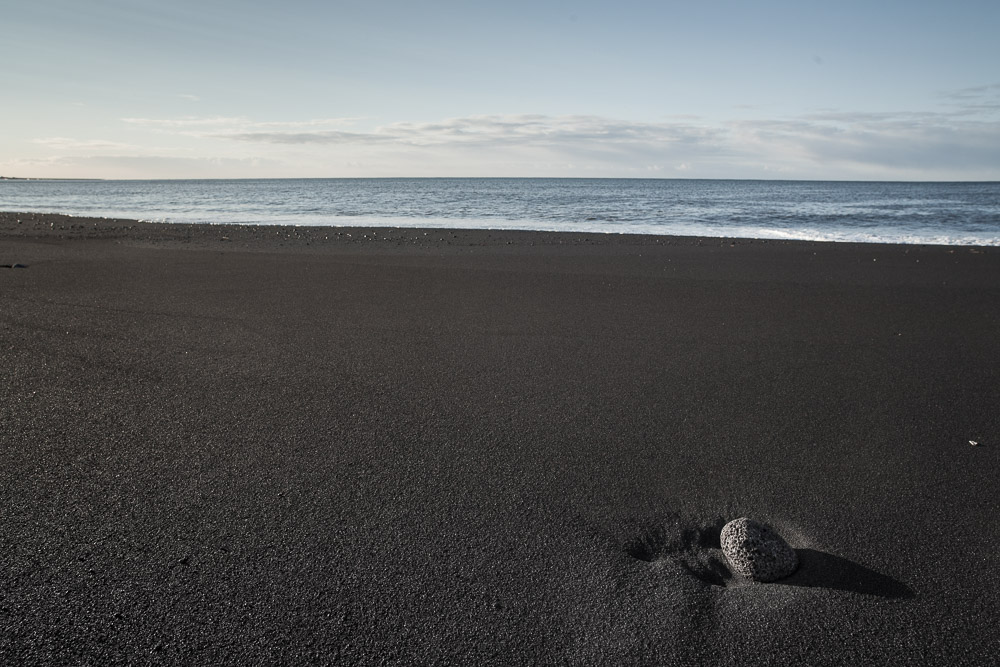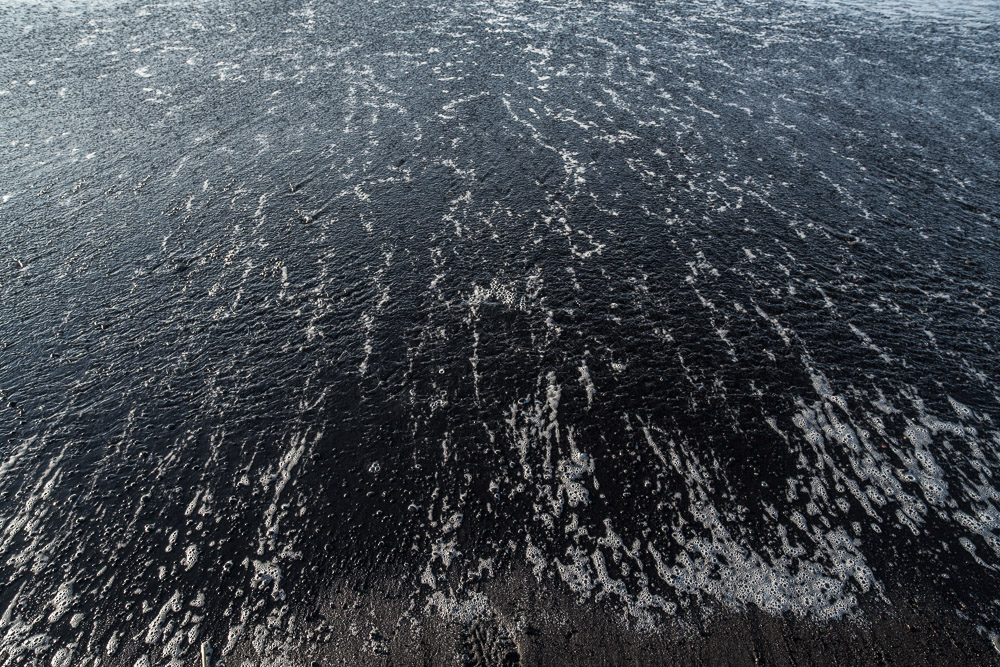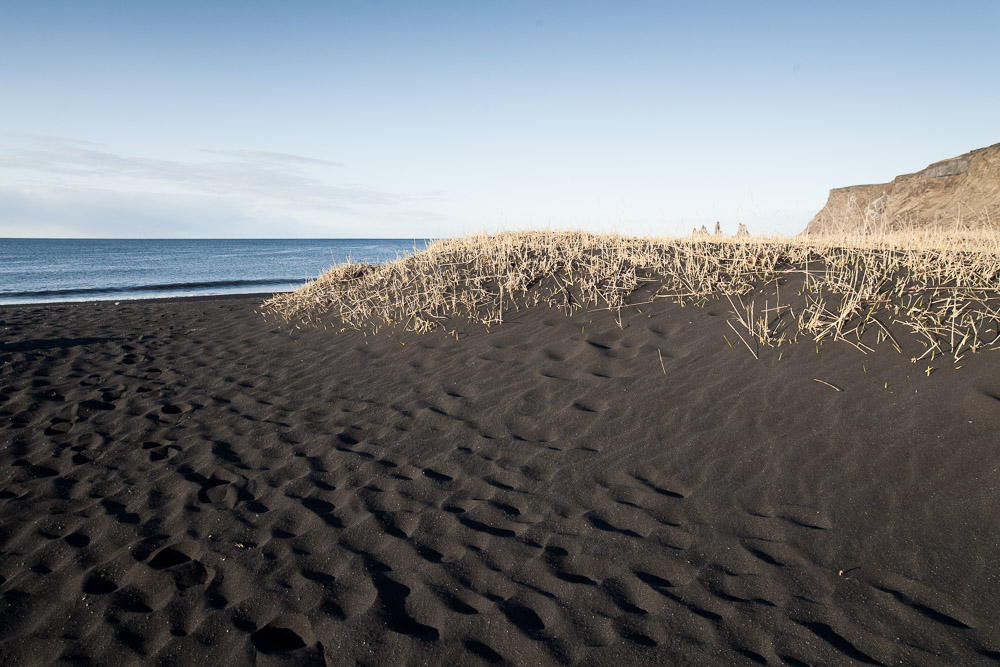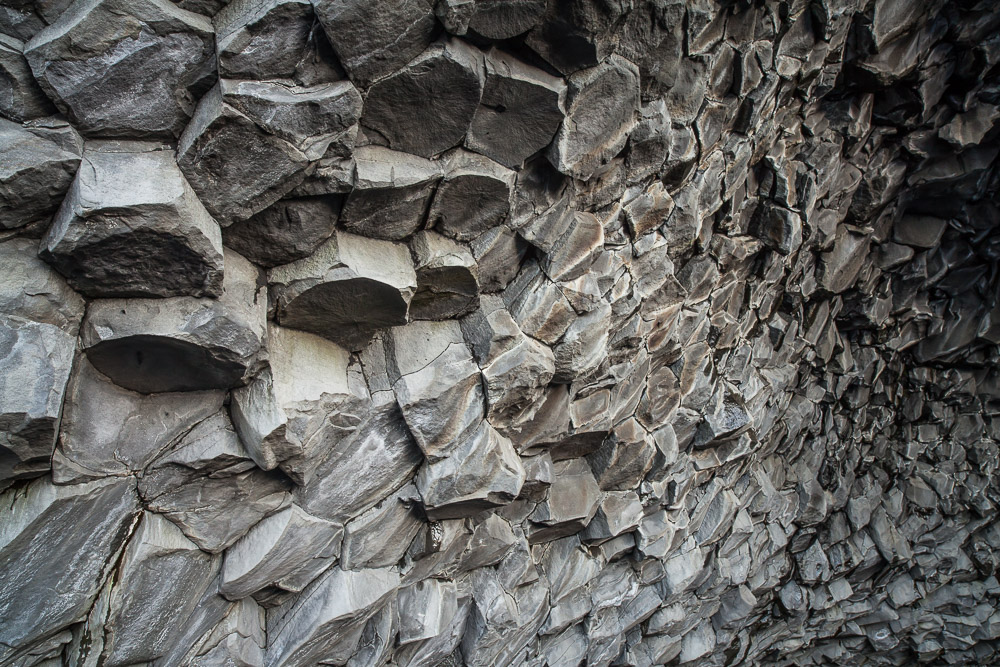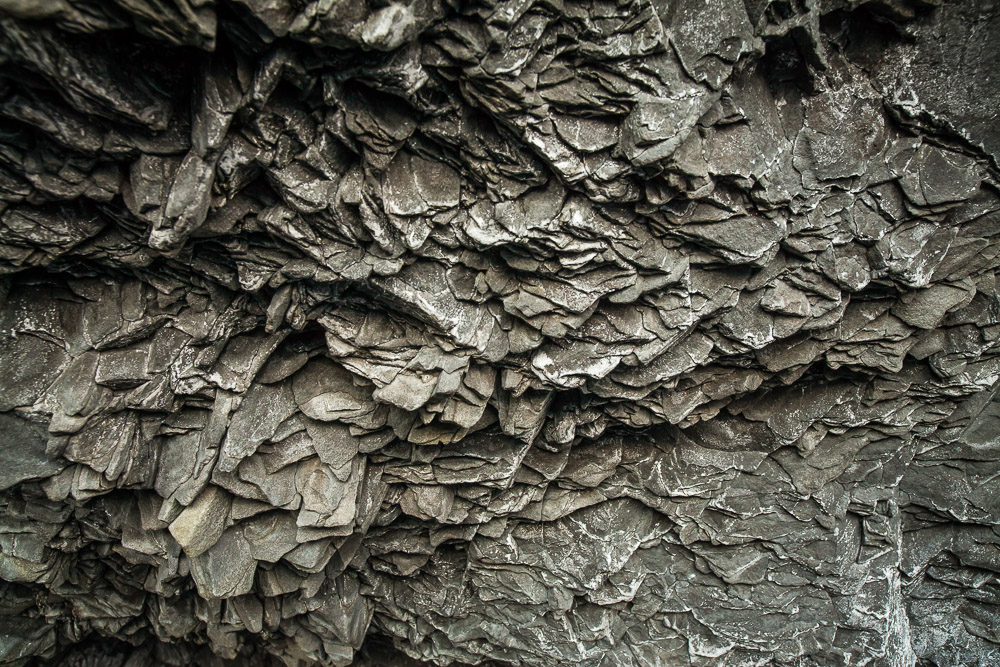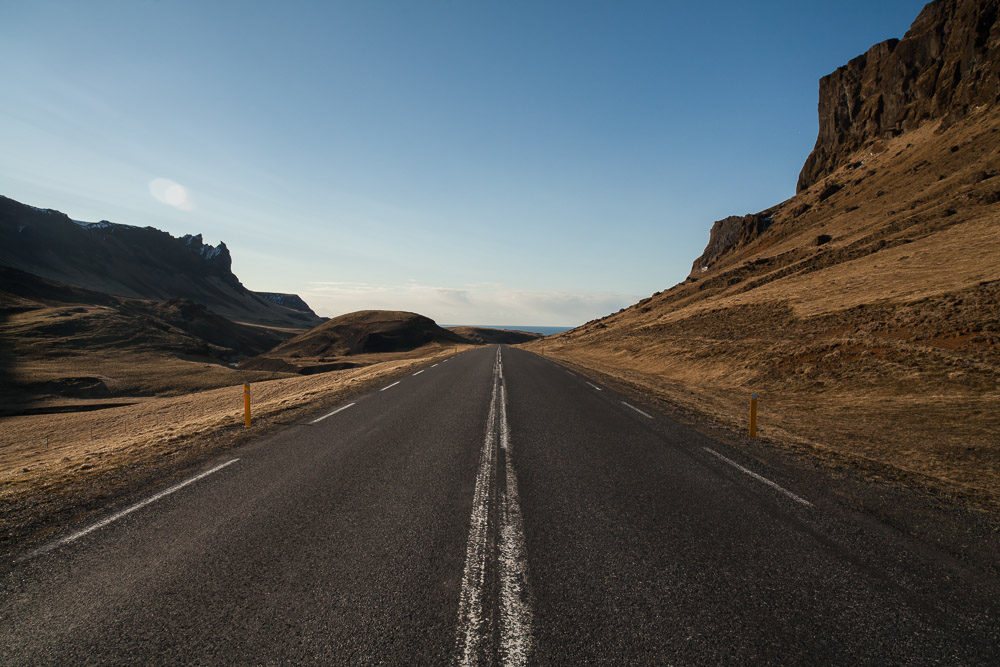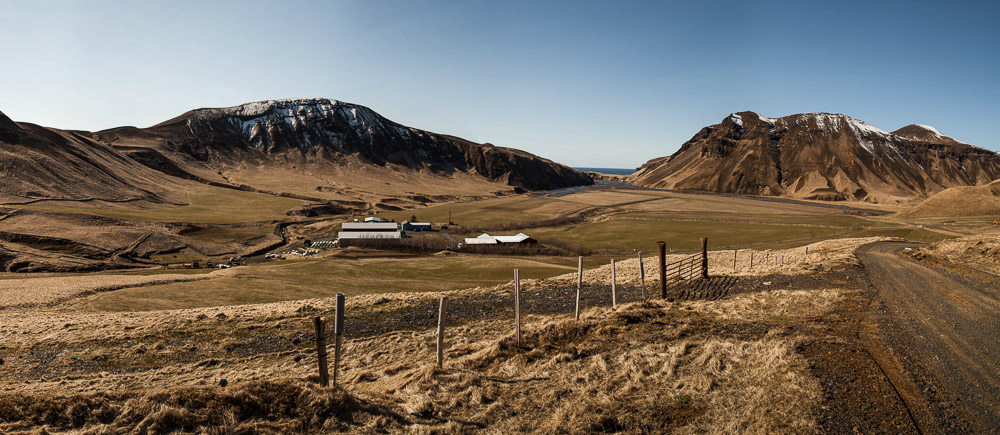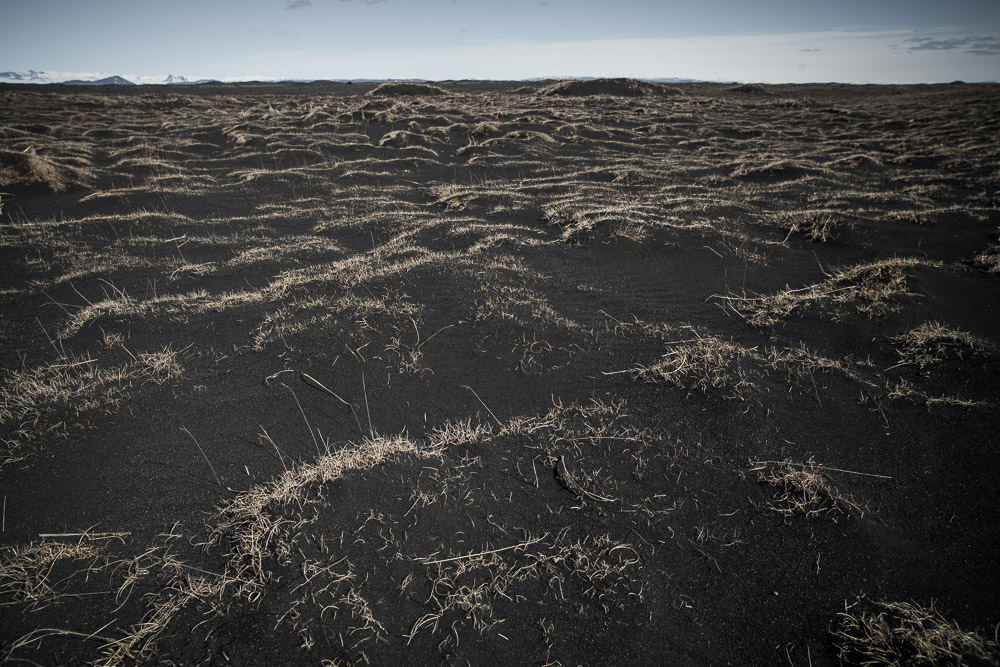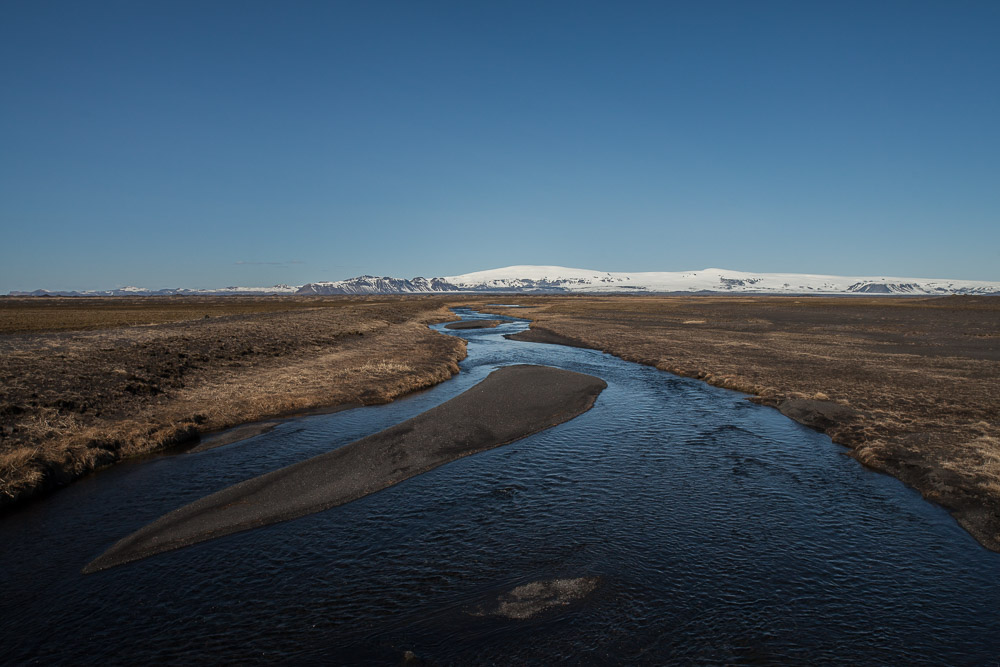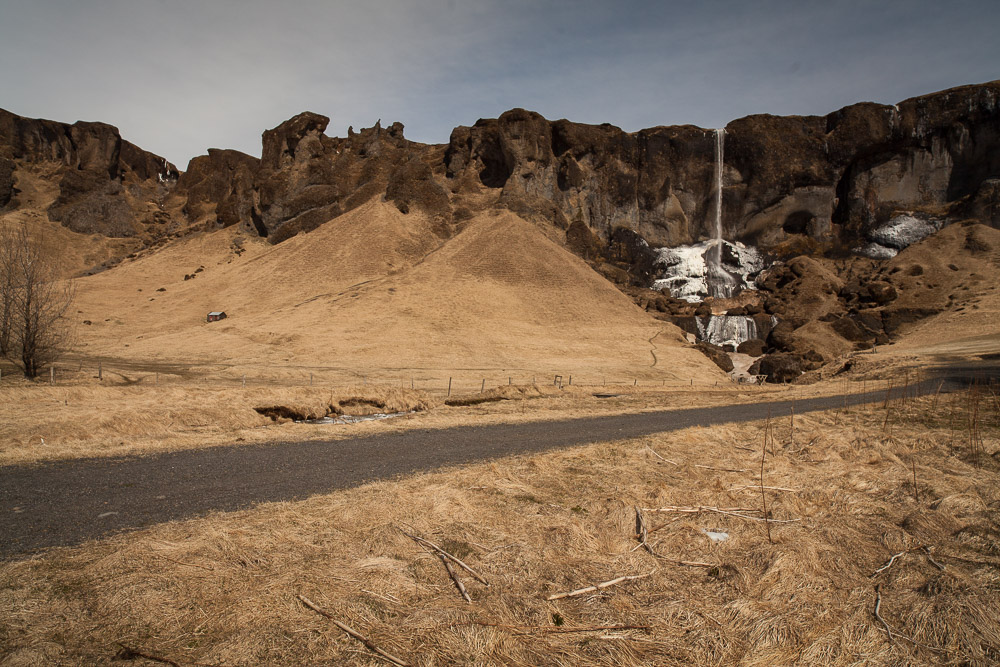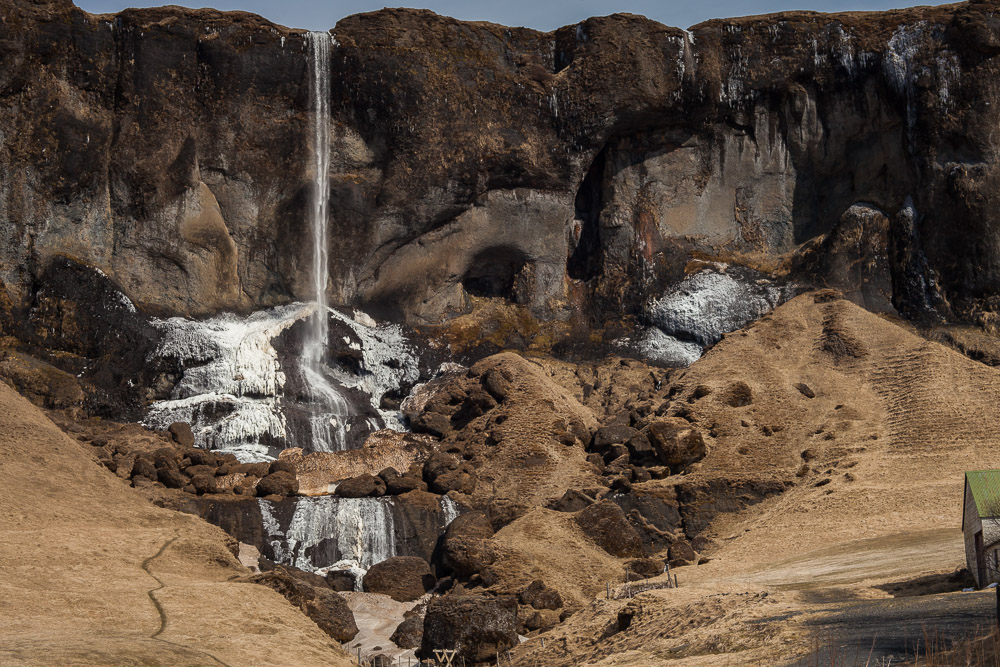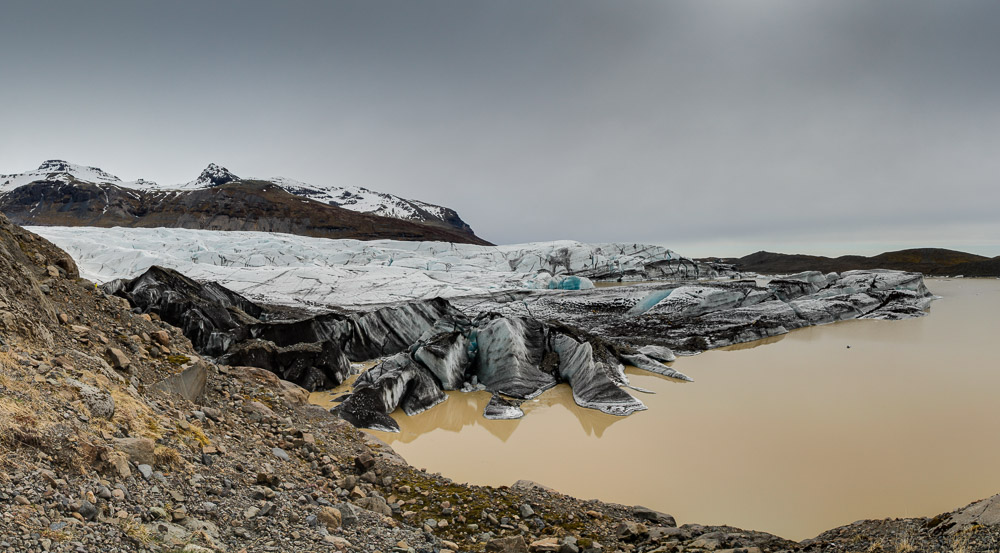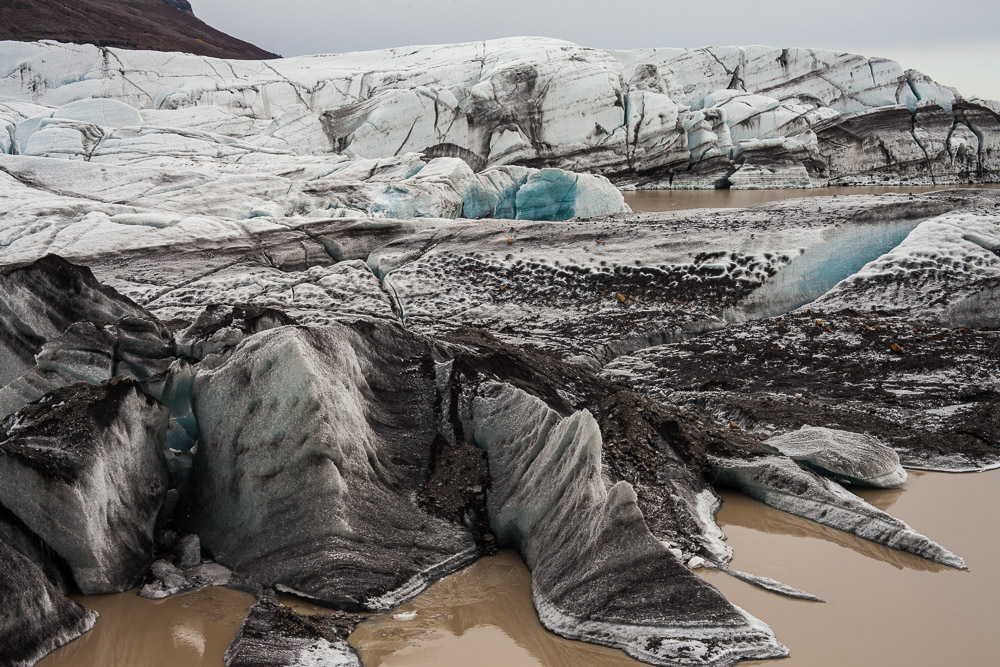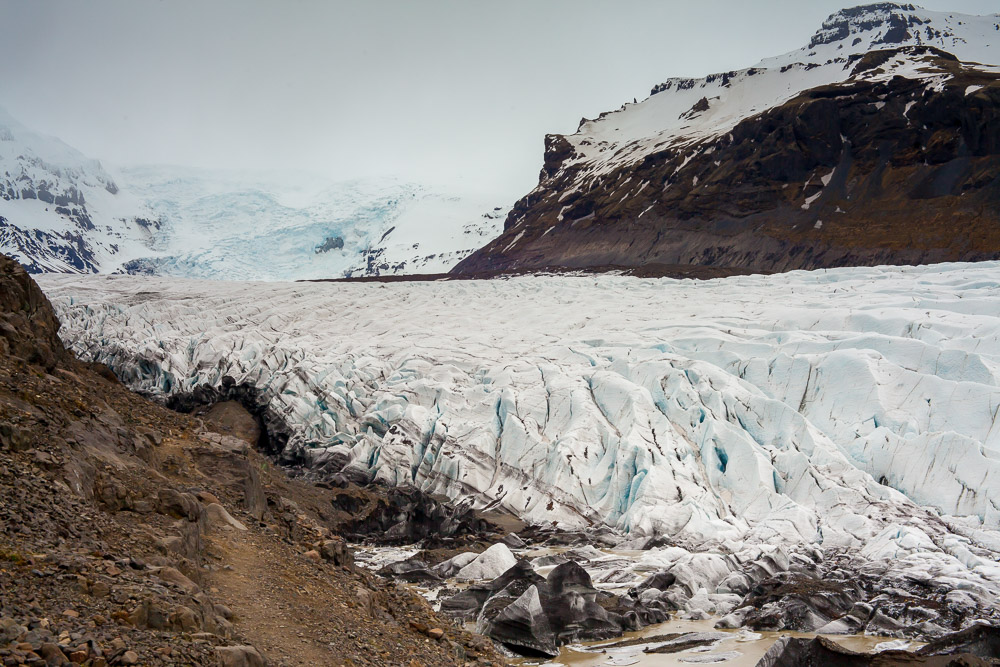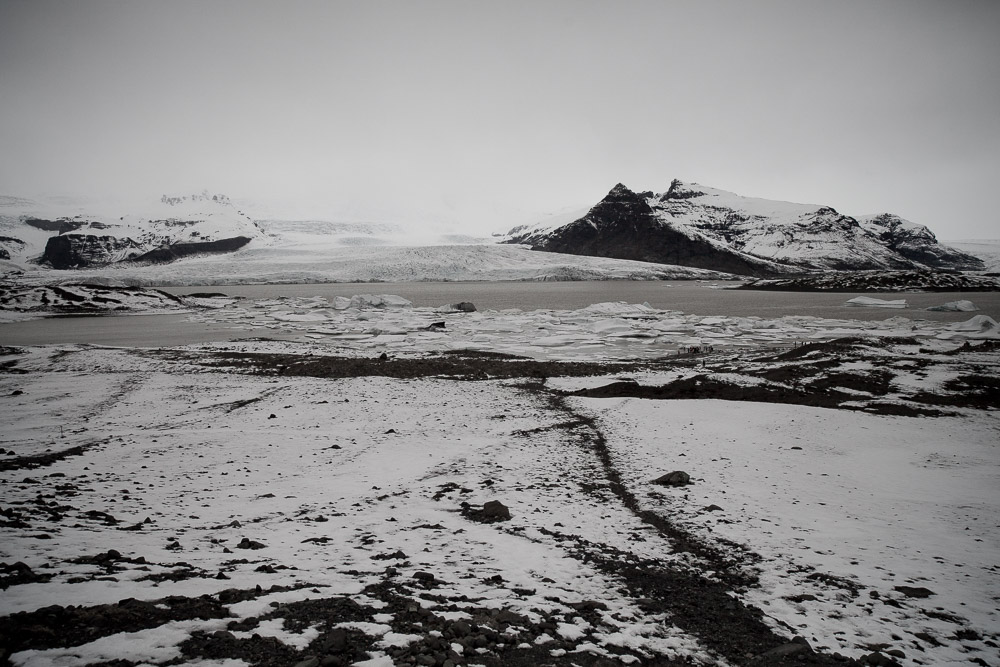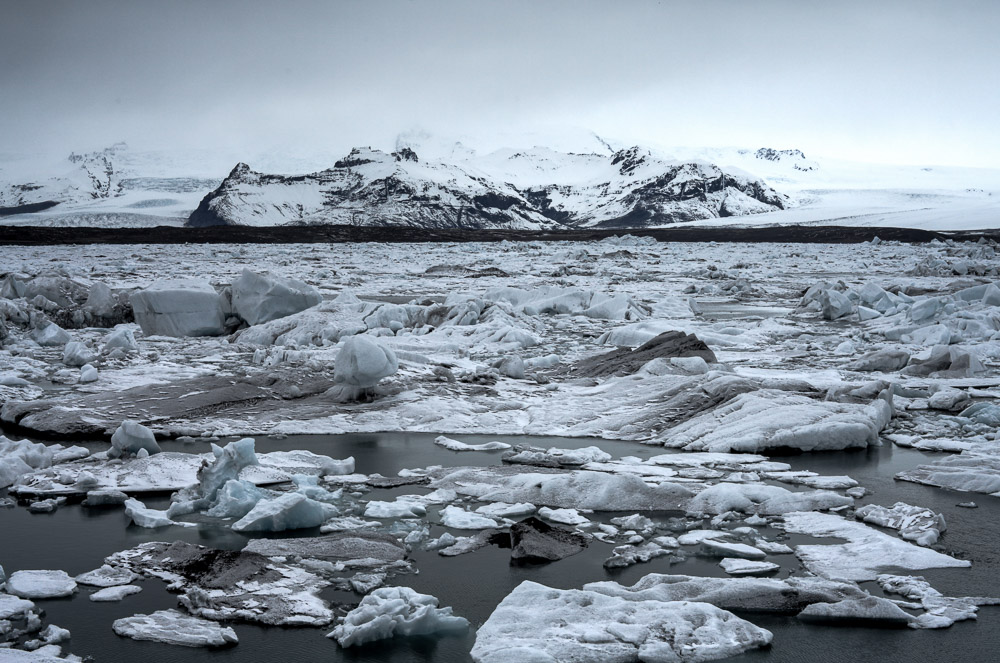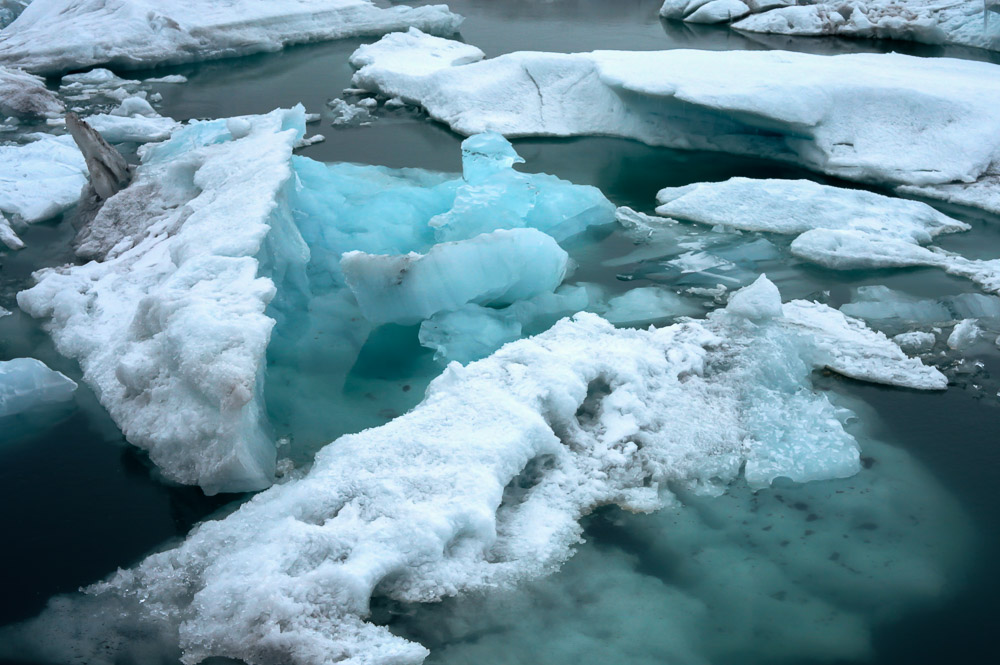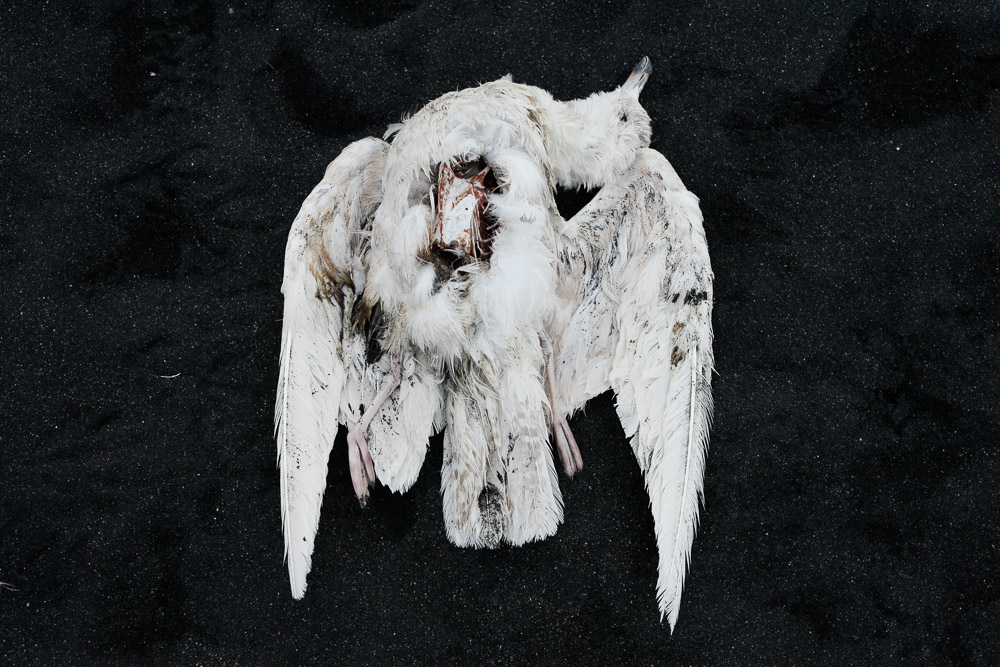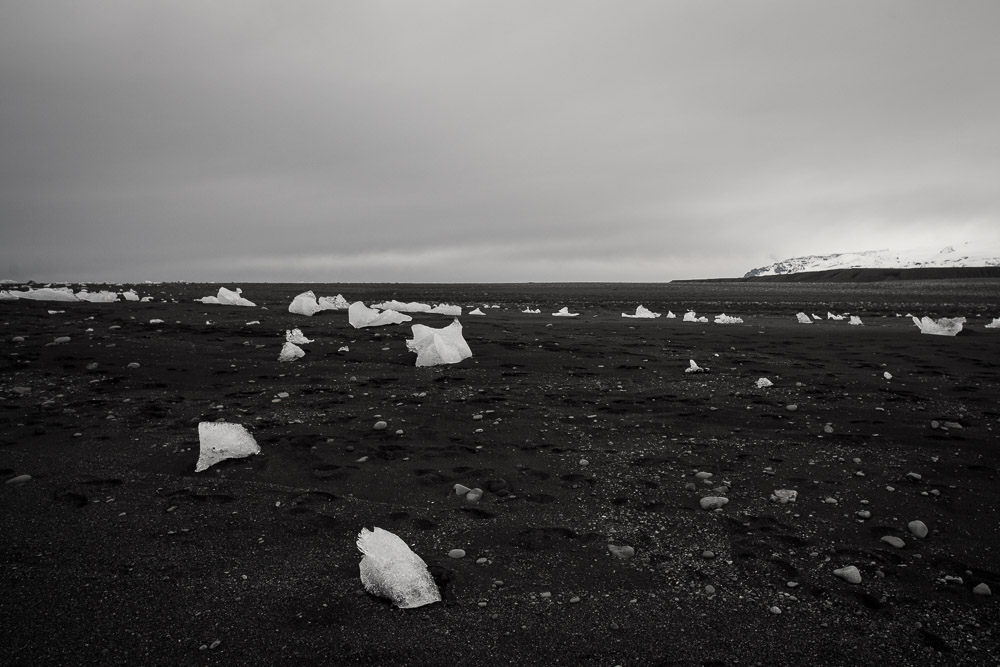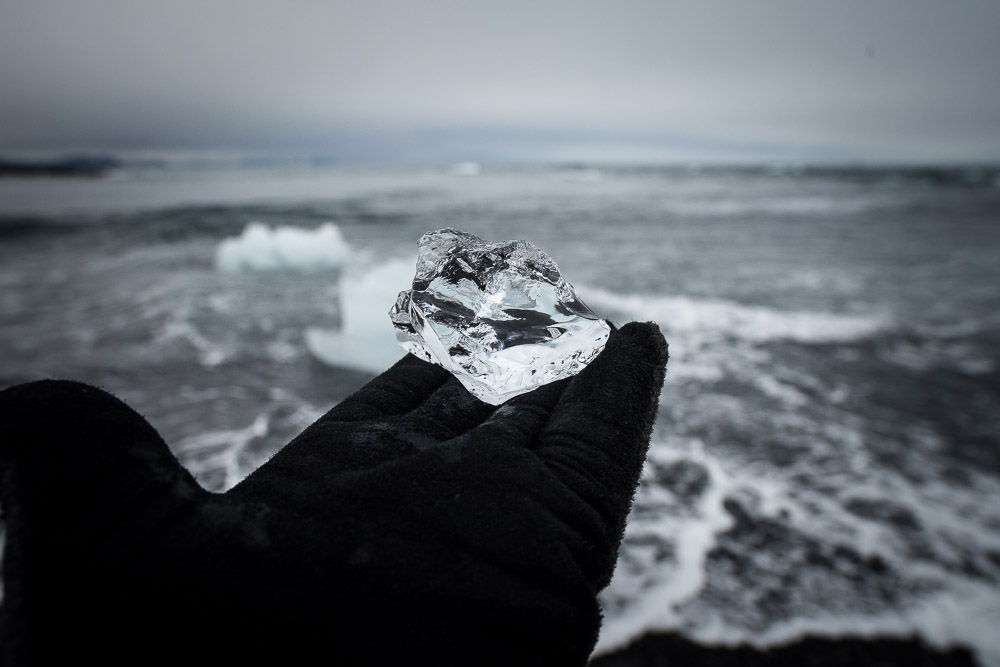DAY 5
Vík to Höfn
I got up early to catch the light on the black sand beaches of Vík, and also doubled back toward Dyrholæy to explore a bit more. Met a few hardy photographers on the beach, as well as a sheep dog along the road who seemed really happy to see me. Sometimes you find yourself in the middle of a road, in the early morning, rubbing a dog’s belly to say good morning. If he didn't have a collar, we might have gained a traveling companion.
This next part of Iceland is the part the rental car companies warn you about. Beyond Vík is a good 100+ km of flat black sand, the end result of glaciers retreating over centuries and crushing everything to a fine, black, flat expanse. This area is also a giant wash for when a volcano decides to erupt and send tons of water and ice churning across the landscape, destroying everything in its path. More frequently, strong winds whip up a sandstorm that will turn your nice shiny rental car into a matte finish custom monster within minutes. Fortunately the winds are quiet today, and we make it through without incident. The last stop in this landscape is a massive twisted I-beam in the middle of nowhere - the remnant of a bridge that was completely destroyed when an eruption sent millions of gallons of water and 100-200 ton chunks of ice across the wash in a space of 15 hours.
The first glacial lagoon of the day - Svínafellsjökull - is right next to Skaftafell, where you can camp and hike into the glacier and falls. The lagoon is a dirty brown, which contracts well with the black, white and blue of the ice. Photographs don’t do it justice - it’s massive. It’s also really dangerous, as a plaque near the trail memorializes two young German hikers who entered years ago and were never seen or heard from again.
Further down the road, the color starts draining away from the landscape and it feels much colder when we get to the lagoon of Fjallsjökull. The wind is too fierce to make the hike down to the waters edge, but there’s a tour bus full of people down there, and it didn’t take long to notice that a few people were wearing neon Speedos and nothing else. The group was going for a swim in 35F water, and would be getting out into what was easily a 25F wind chill. Later on that night I asked the owner of the guesthouse we were staying at in Höfn if lagoon swimming was a thing that people did, and he slowly and incredulously said uhhhh, no.
We left the polar bear club behind and headed to Jökulsarlón, a massive lagoon where, in the summer, you can take a half-hour boat ride through the ice. This being May after a cold long winter, the lagoon was pretty packed with icebergs, with not much room for a boat. From here, you can watch the ice slowly float off into the ocean, sometimes winding up on the black sand beach nearby.
Not long after, we pulled into Guesthouse Dyngja in Höfn, and quickly made ourselves at home by digging through their record collection and slipping on some Stan Getz to close out the night.
